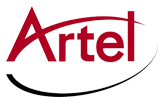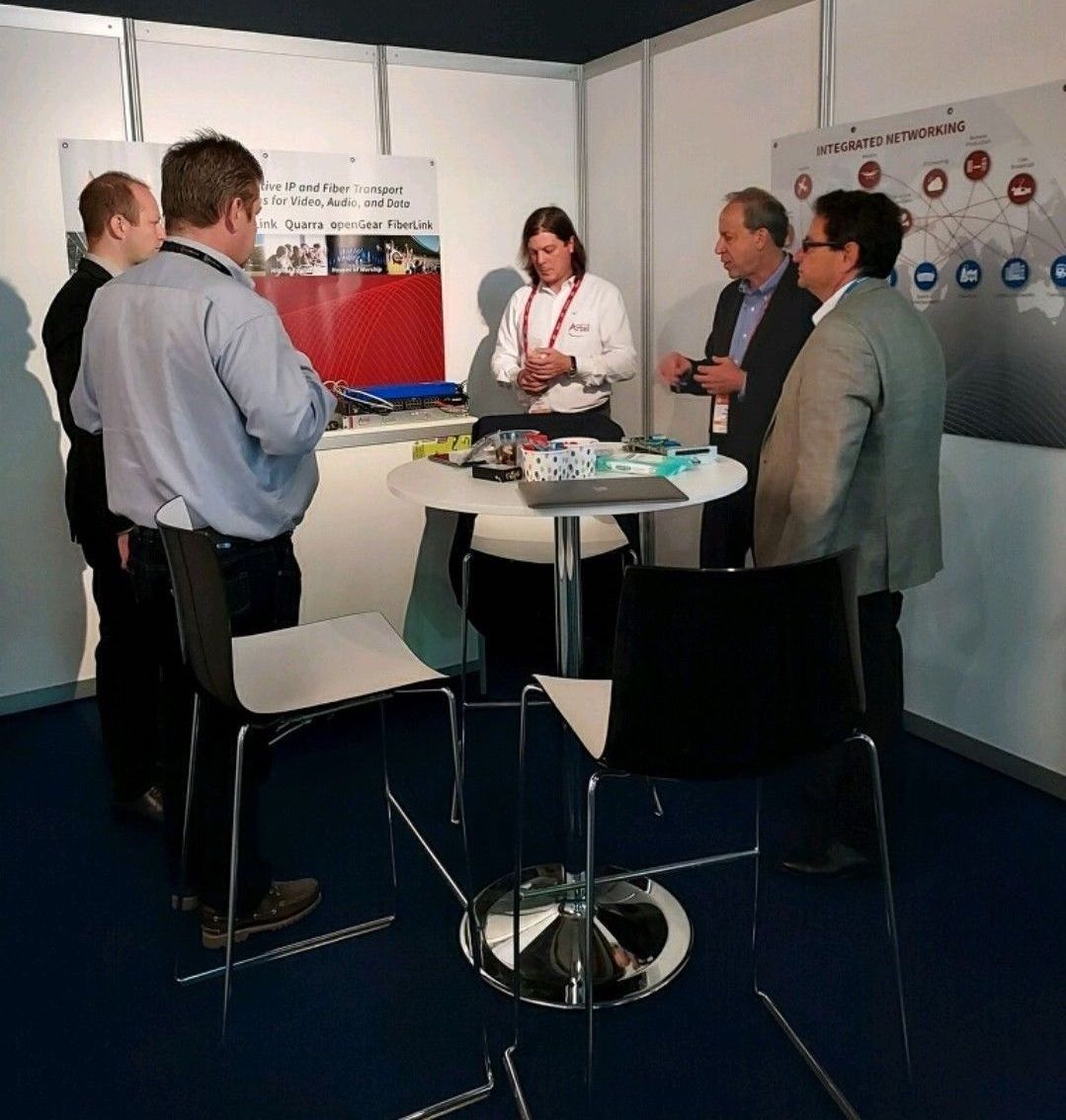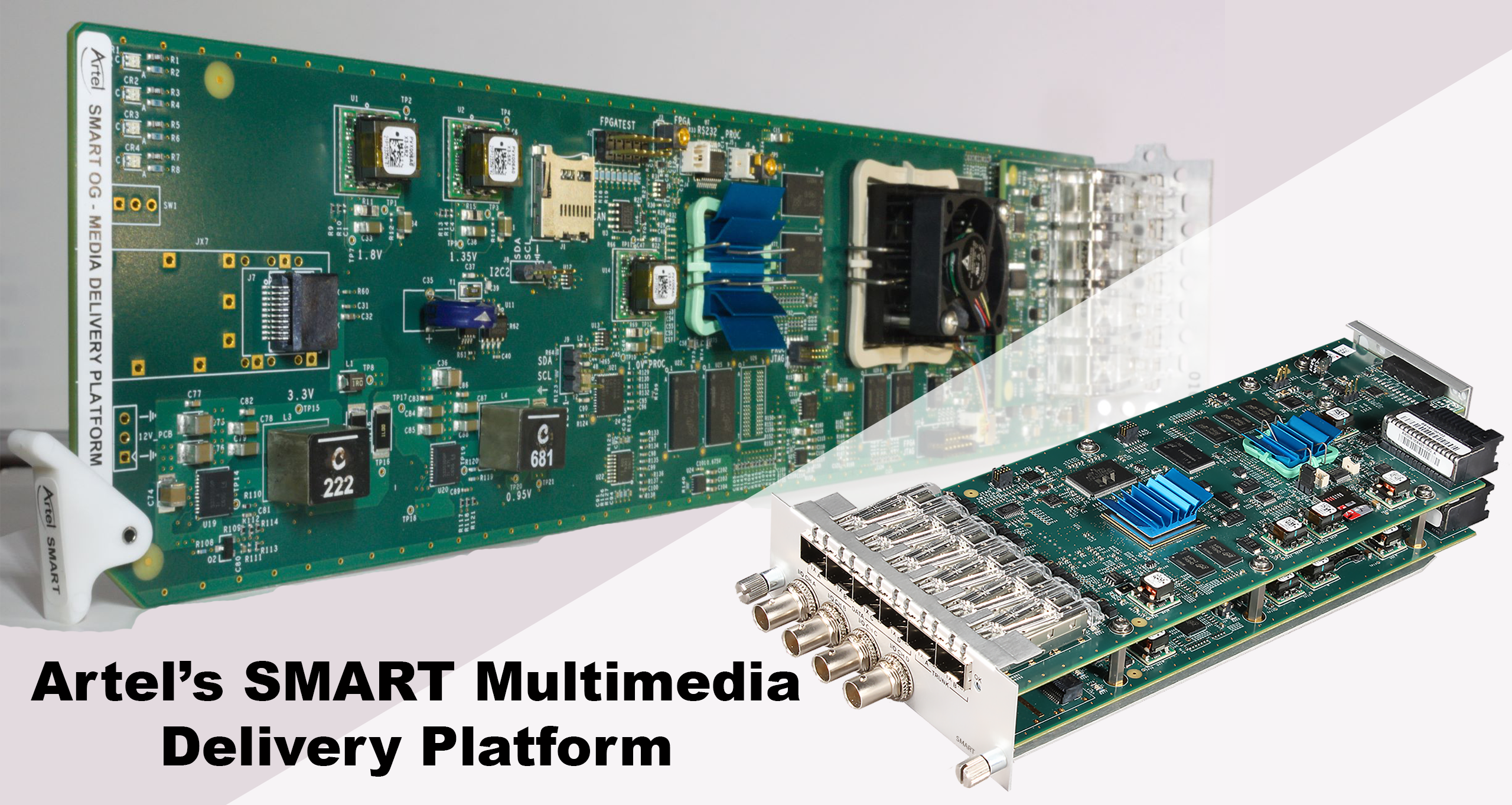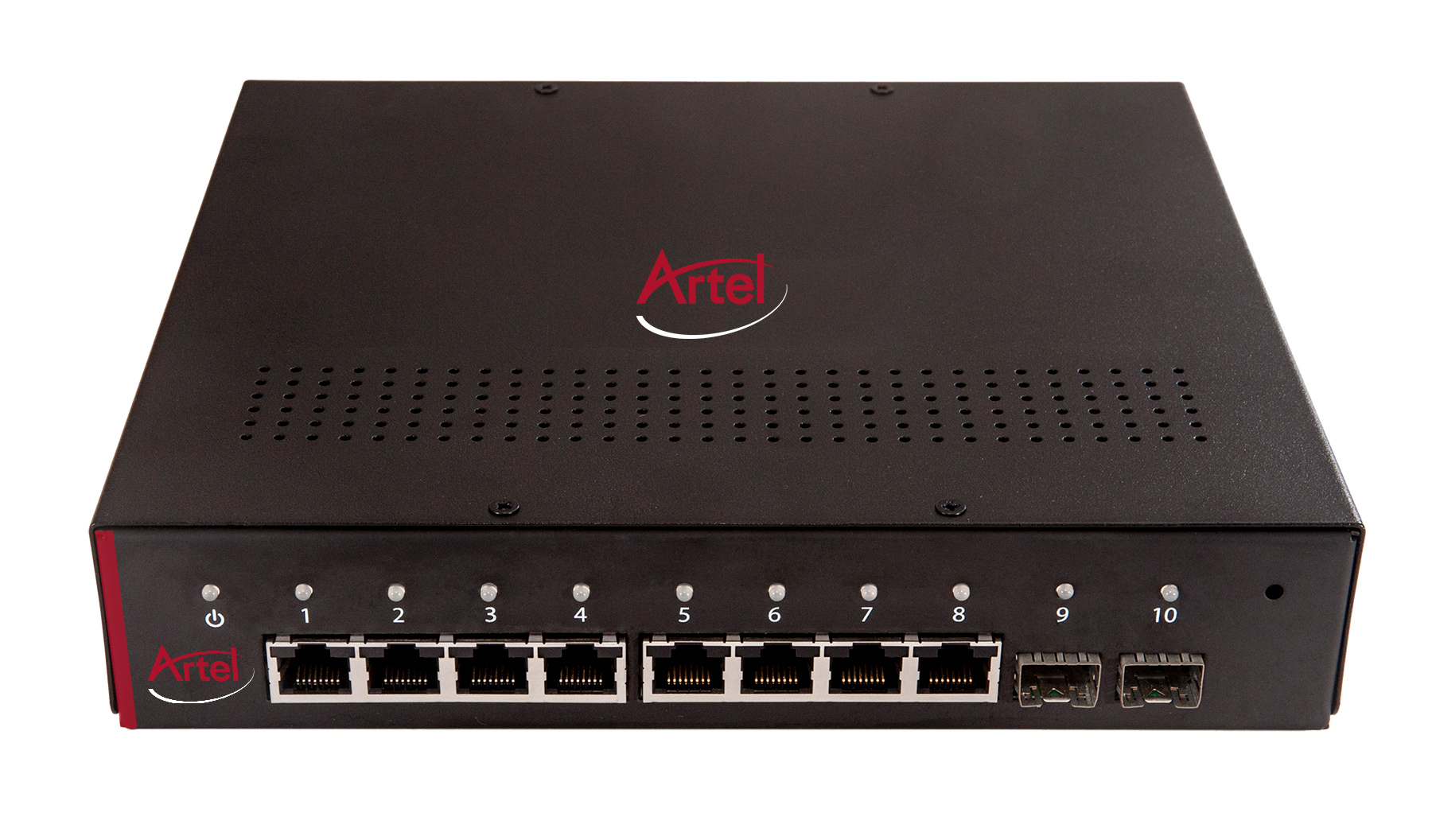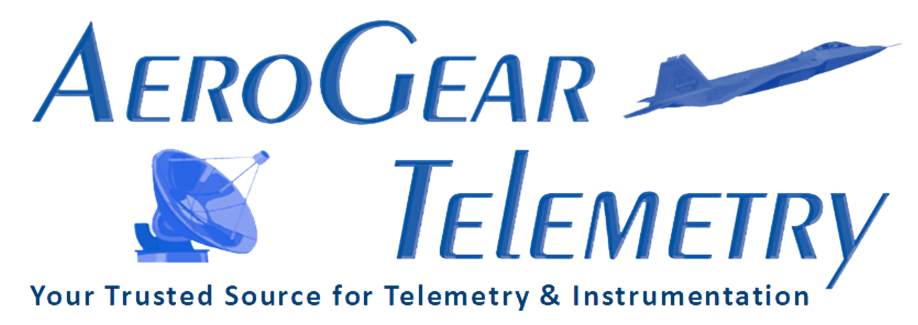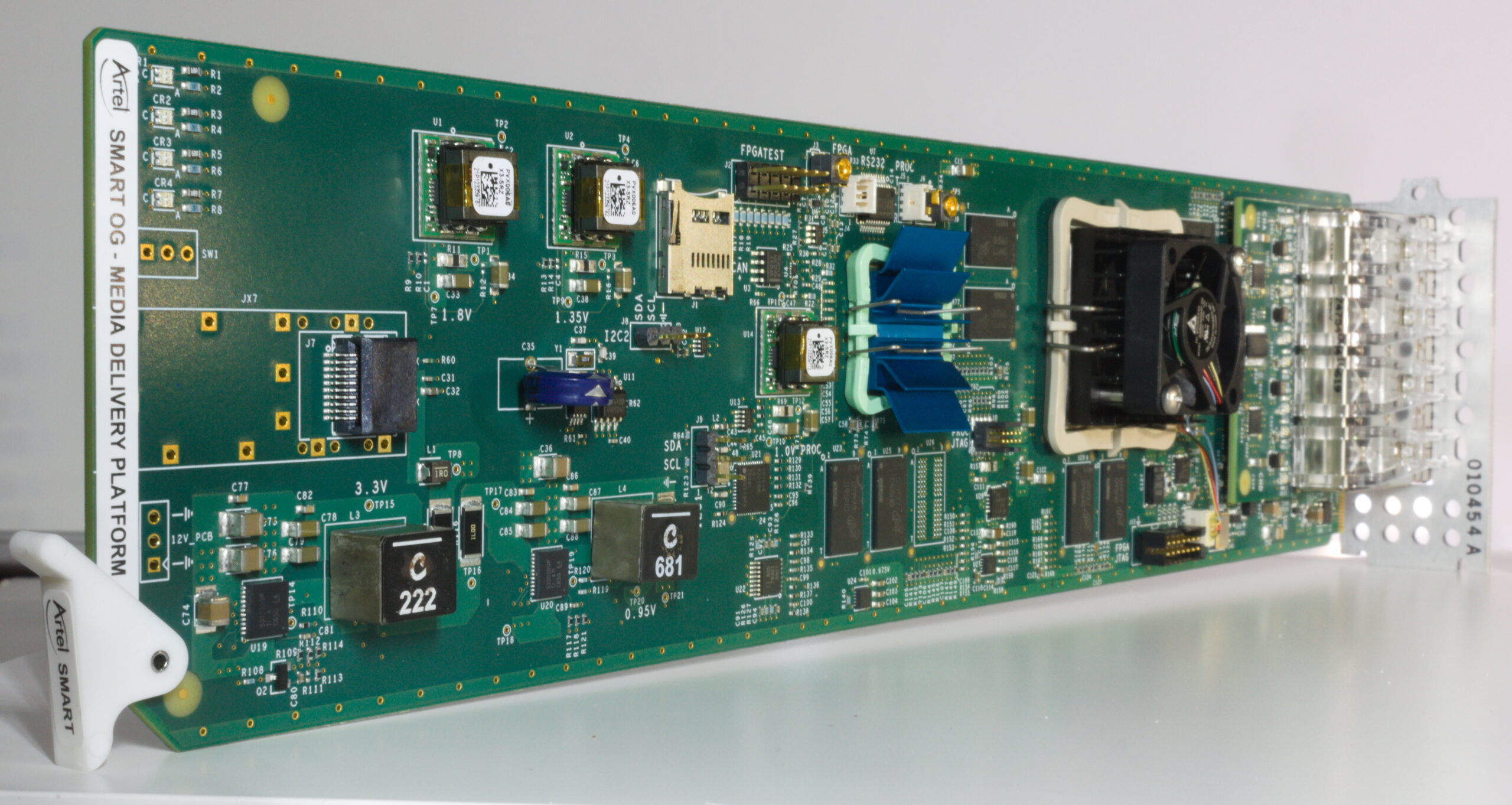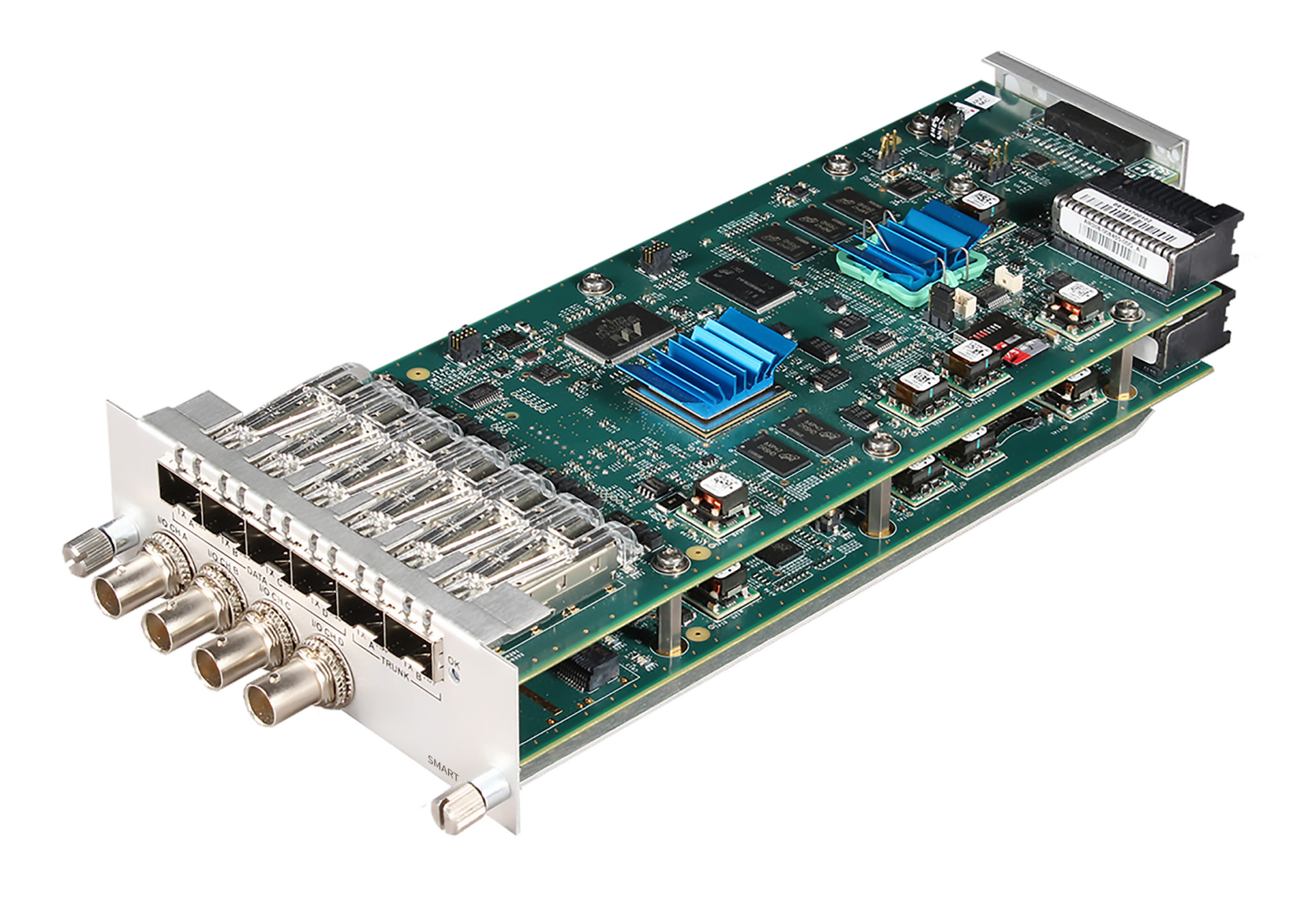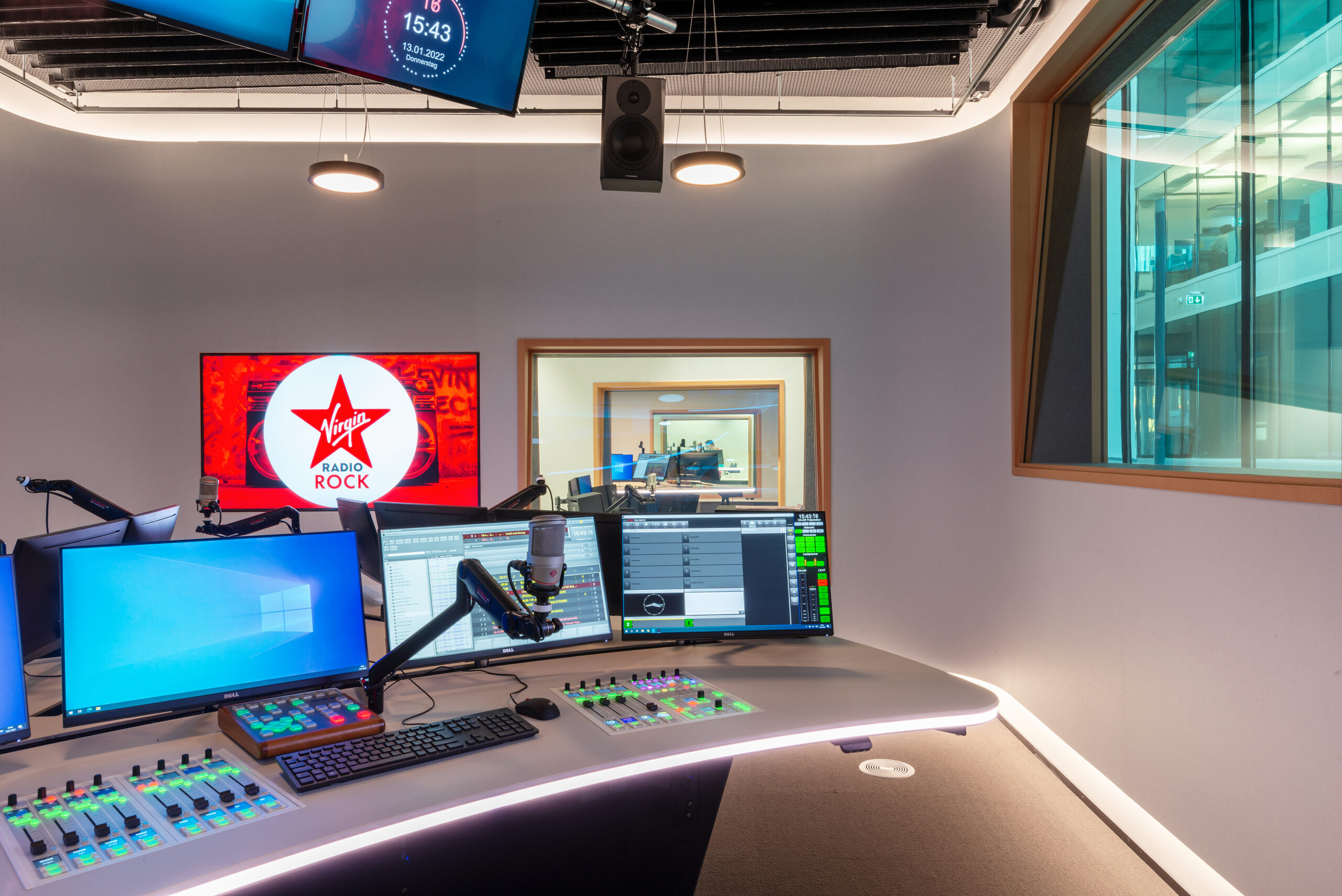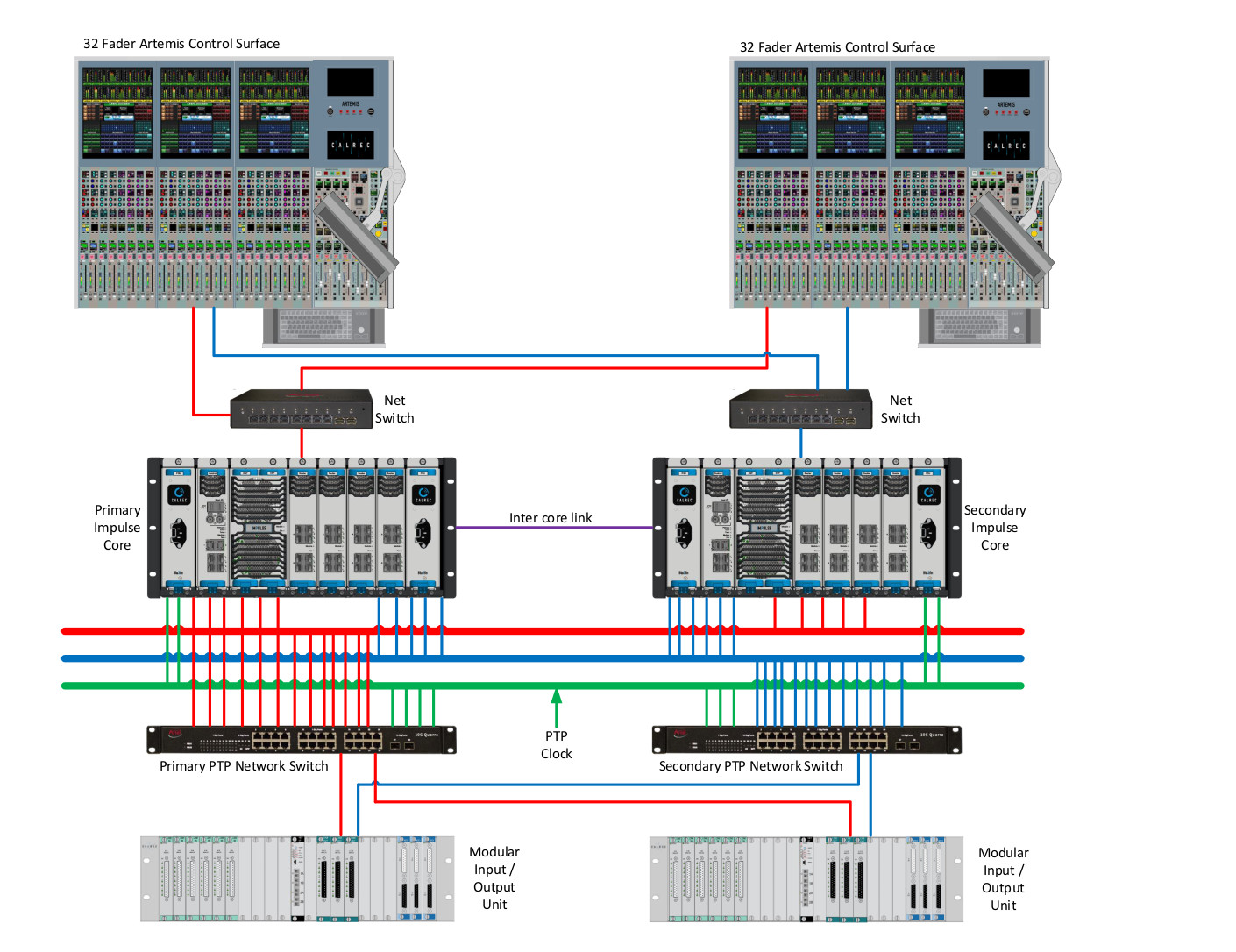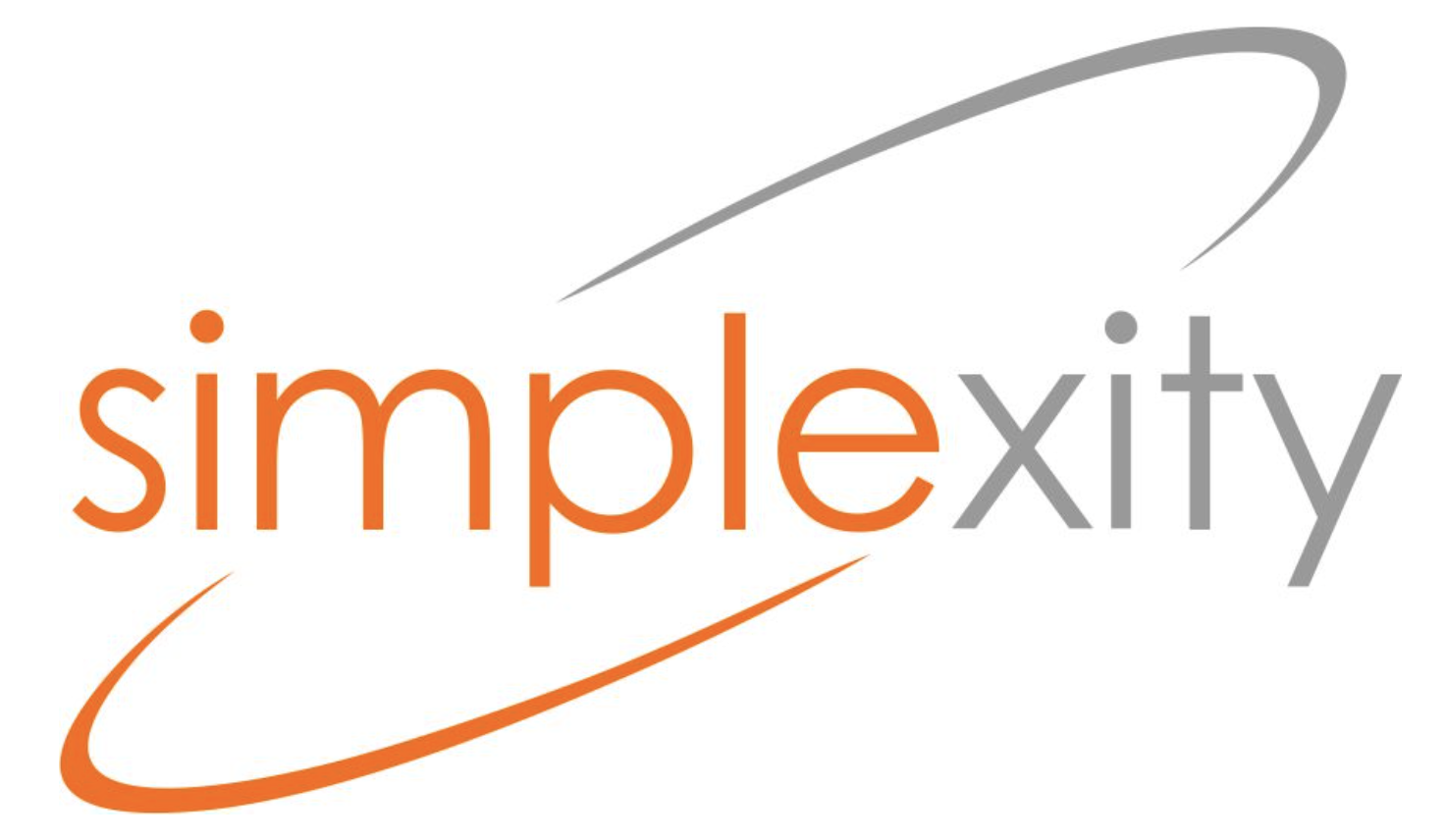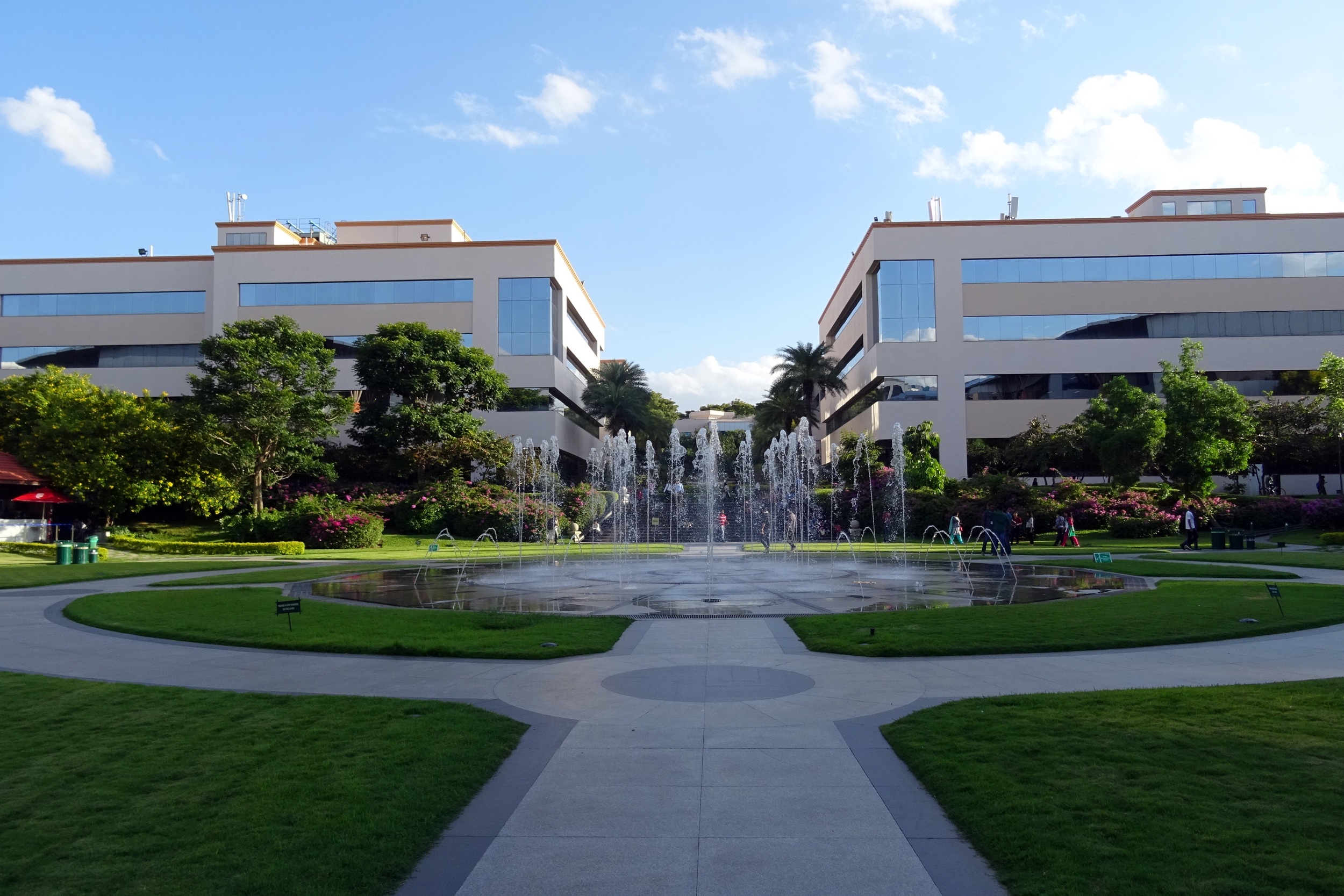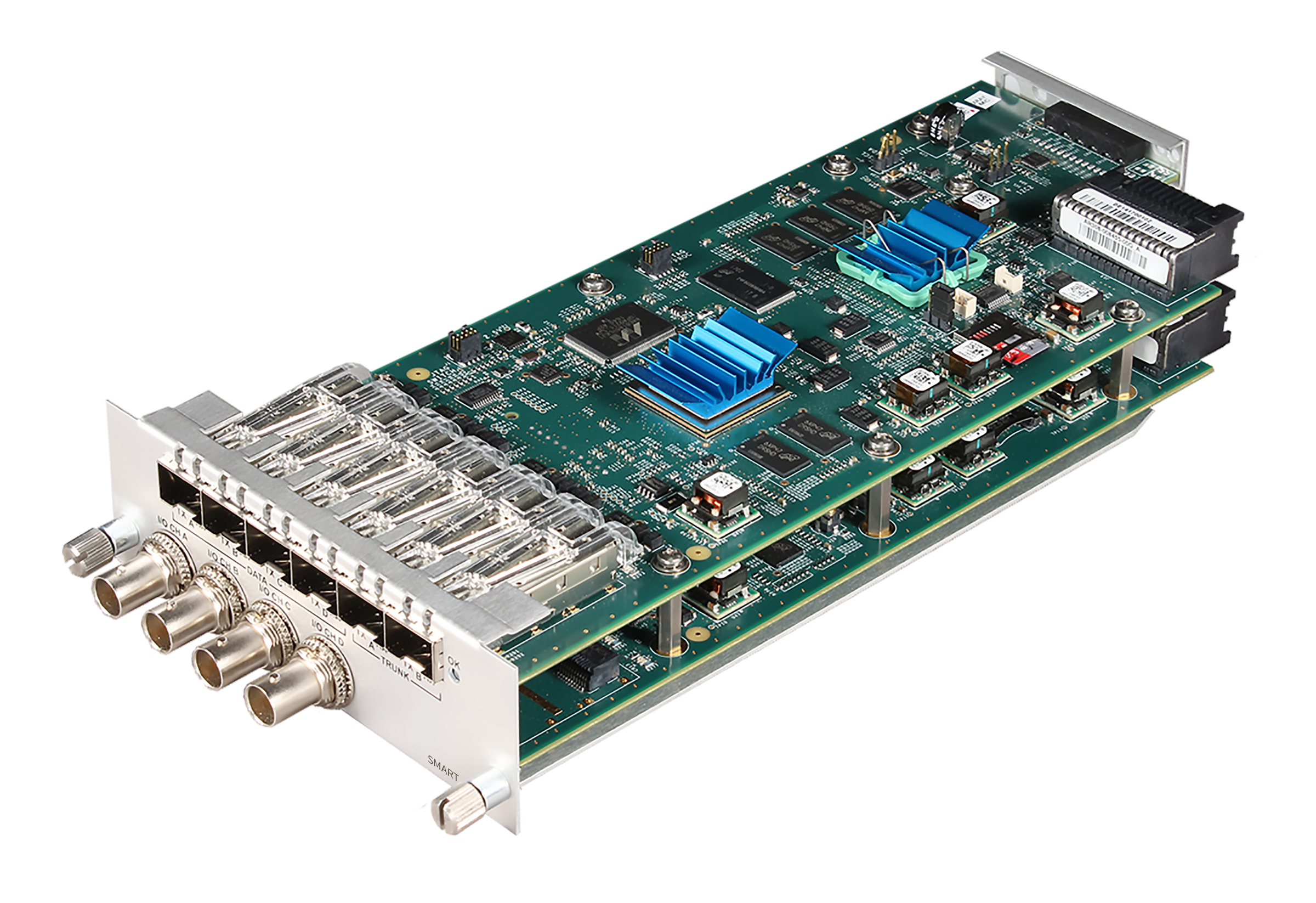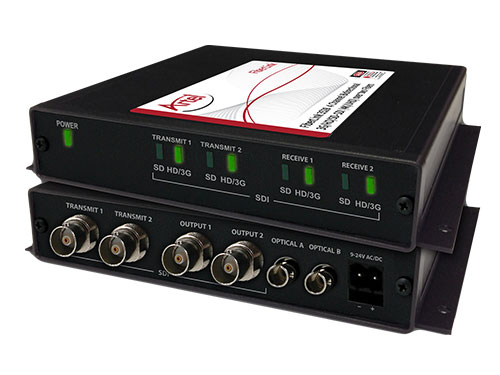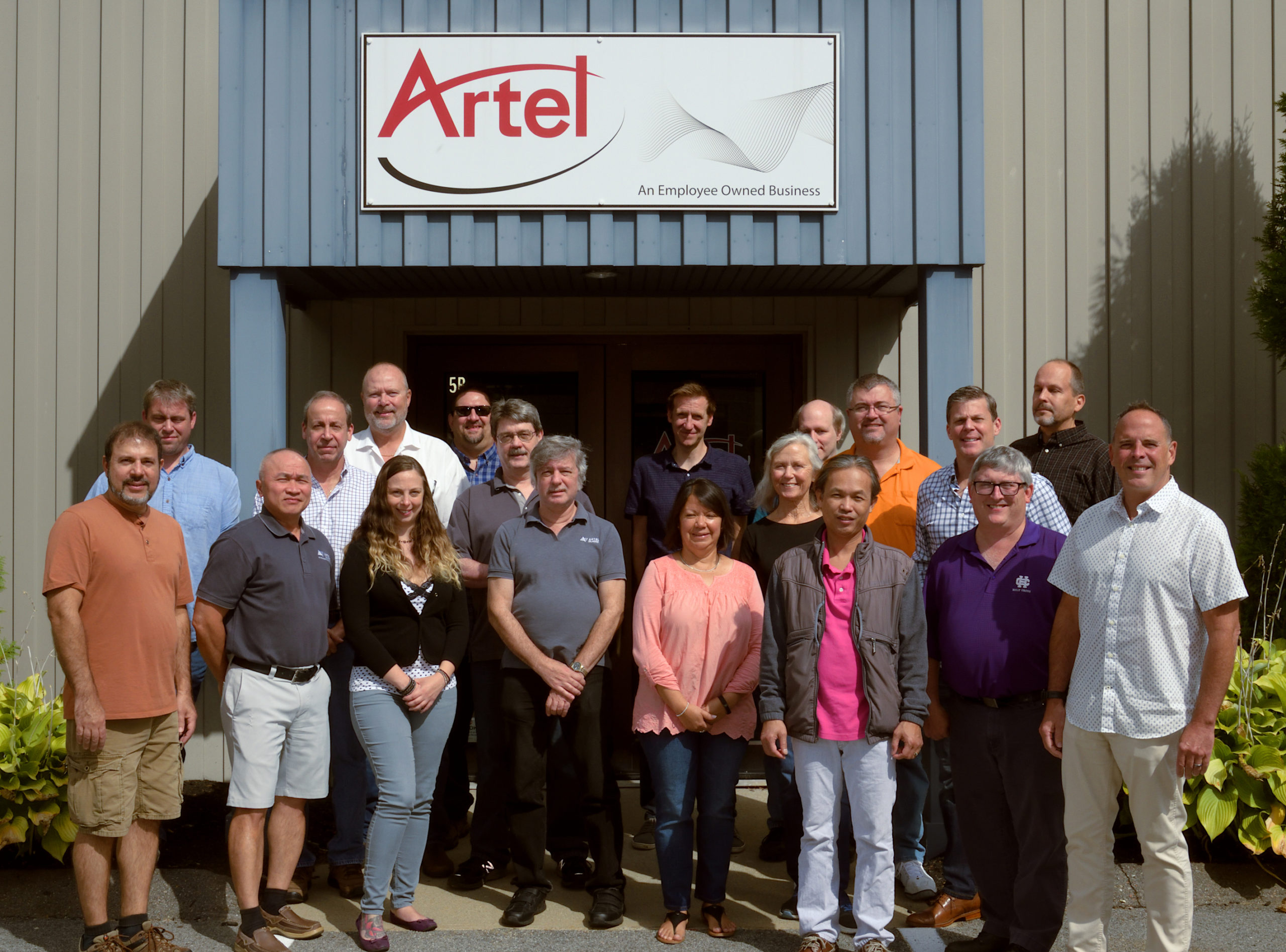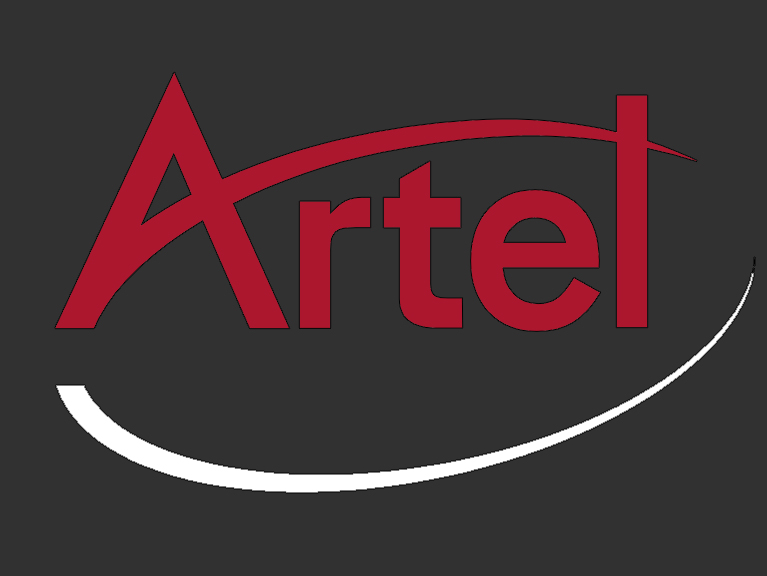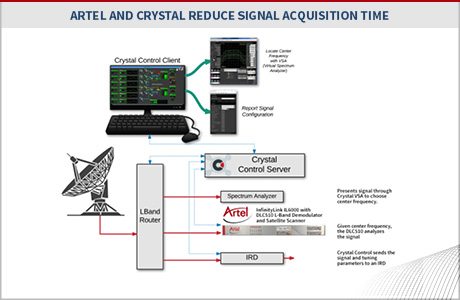Artel in Action – Winter 2023
Welcome to 2023’s first Artel in Action, our quarterly newsletter keeping you up to date with what we’ve been doing lately.
In this edition we ask: What is in store for 2023?
In 2023 IP adoption will continue to become mainstream, implemented not only in greenfield applications, but also to augment or expand existing facilities. This will lead broadcasters and the industry to normalize and realize that it is a business after all, where pragmatism in implementation, fiscal prudency, and return on investment is key. This means that infrastructure and implementation choices will be done based on business levers where technology is just an enabler to accomplishing business imperatives. Sign up below to make sure you don’t miss the next installment of Artel in Action!
Download Artel in Action Winter Edition.
Newsletter Subscription
What’s in Store for EMEA in 2023
Artel has long had a presence in Europe, the Middle East, and Africa (EMEA), but in late 2021, we doubled down on serving this region when Egor Tyagunov joined our team. As Artel’s primary sales contact in EMEA, Egor is an expert in broadcast technology and has relationships throughout the region. (Some of you might already know him.)
In this conversation, Egor tells us about Artel’s plans for supporting EMEA broadcasters in 2023.
You’ve been with Artel for just over a year now. Tell us about your first year.
I spent a good part of my first year travelling the whole EMEA region — from Siberia to Spain and throughout the Middle East — meeting the resellers, getting to know the market, and figuring out how Artel could help soothe broadcasters’ pains.
My travel coincided with the end of lockdown in many places. Business was starting to get back on track, and people were anxious to get back to “normal” networking practices. Those in-person chats that take place at different trade shows and events and facilities from country to country — that’s how you see the trends and understand which projects are using which technologies in which places. And since I’m looking at all of this with fresh eyes, I can perhaps identify new strategies that will help move Artel and the industry forward.
Based on what you’ve learned from your extensive travels, what trends do you see?
Since Europe is made of a community of smaller countries, certain technologies take off in Europe first before they expand to other parts of the world. We’ve seen that a lot with media over IP.
Many European production facilities have already migrated to IP or are deep into it. They’ve taken their media transport infrastructures from old-school copper video cables to video over IP and uncompressed audio over IP. The SMPTE ST 2110 standard format is becoming more and more popular. Artel’s switching products serve as the core of an IP infrastructure.
Contrast Europe with Africa, Pan-Asia, and some parts of the Middle East, where some broadcasters haven’t even begun to think about IP because their budgets aren’t yet ready for ST 2110. Some very old studios will need to be rebuilt from the ground up.
What are your plans for the region in 2023?
Even though we’ve been around a long time, Artel is a small company, and we’re not well-known in every country in the region. So generally speaking, my goal is to build personal relationships and establish trust with regional channel partners and with integrators that promote our products as part of their solutions.
I mentioned earlier that Europe’s transition to IP infrastructure is already complete or well underway. Take audio. Artel is a Ravenna partner, so in areas where Artel’s Quarra PTP switch might be a fit, I will continue to strengthen relationships with audio console manufacturers that are also Ravenna partners.
In terms of video and data transport, Artel’s SMART Media Delivery Platform, with the latest tech compression implementations, is available in our DigiLink and InfinityLink frames. Now that it is also available in an openGear card, we’ll work with my friends within Ross (developer of openGear) to find strong channel partners in the various markets that might need our openGear technology for J2K and JPEG XS.
It’s all about building trust, and that starts with offering the right mix of Artel products in the right places to help solve whatever problems resellers and their customers face. Then we have to demonstrate how Artel technology is better than the competition at helping companies stay ahead of the industry. This involves sharing proven implementations. Not only do we have many examples of successful end-user implementations, but several of our manufacturing partners own our products and use them in their R&D labs and networks, so they can vouch for the performance and benefits.
Incidentally, none of this is easy to do exclusively over Zoom. That’s what makes travel and face-to-face interaction so important.
Will you focus on a particular region or market segment in the coming year?
Given the need for massive infrastructure changes in Africa and the Middle East, that’s where I’ll be focusing much of my effort in 2023.
Case Study: United Launch Alliance (ULA)
ULA is the nation’s most experienced and reliable launch service provider, having launched more than 150 missions with a 100% success rate. With every launch mission, Vulcan will have to make its way from the hangar or storage facility to the launch platform on a transport vehicle, which crawls along at about 1 mile per hour. ULA must monitor and support the health of both the rocket and the vehicle during the journey to the launch pad and during the countdown. That task calls for small, high-density media-delivery products that can move 4K/UHD video up to a mile over single-mode fiber without fear of losing power. ULA also needs products that can carry audio, data, and control signals, and they have to be flexible enough to transport IRIG time code in multiple standards over either single-mode or multimode fiber. Finally, all products must be modular, as the environment is not suitable for equipment that gets installed in racks.
After having worked with Artel on previous projects on a smaller scale, ULA chose Artel once again to outfit the monitoring operation for Vulcan for the next several years. Unlike most other solutions, Artel products meet all of ULA’s requirements and more.
With SMART Media Delivery Platform As the Technology Seed, Artel Takes on the Future
Let’s talk for a minute about technology seeds. It’s the simple concept that you can take proven features and functionality from one product line (the seed) and transplant them to other products or form factors — thereby creating new solutions that closely match the needs or preferences of a given industry.
When Artel developed the almost infinitely flexible and programmable SMART Media Delivery Platform, we knew it would be the technology seed from which so many other amazing Artel solutions would grow. Since then, we’ve used the SMART platform as the base for media over IP in other Artel product lines that mirror how the broadcast industry likes to work.
The SMART platform is a software-defined, four-channel, auto-sensing SD-SDI/HD-SDI/3G/4K-over-IP multifunction gateway. Its architecture is unique in that it supports both SDI video inputs/outputs and general IP data I/O ports in the same module. Users have put this unique feature to work in several ways, some of them quite creative. For example:
1. They use the SDI video ports to onboard SDI video into an IP network while using the IP data ports to move/transport general data, such as files, audio over IP (e.g., Dante audio), control and status information from remote locations, and corporate network extensions.
2. They use the SDI video ports to onboard SDI video into an IP network while using the IP data ports to extend control and monitoring of remote DigiLink/InfinityLink chassis. Users do this by connecting the chassis’ local management port into the SMART data ports, hence creating a hybrid in-band/out-of-band management scheme for the remote chassis.
It used to be that the SMART platform was only available to media companies that use Artel’s DigiLink/InfinityLink frames. Yet many broadcasters have openGear frames or have a predilection for that type of open-standard-frame platform. So even though openGear frames are used extensively in the broadcast industry, that segment of the market couldn’t take advantage of SMART’s one-of-a-kind flexibility and programmability … until recently.
With the growing interest in high-resolution compression engines in broadcast, we saw the need to port the proven features, functions, and traits of our DigiLink SMART platform into openGear. And so, as the technology seed we intended, the SMART platform now takes on the openGear form factor to directly address the broadcast market.
SMART openGear (SMART OG) brings the mission-critical characteristics of the DigiLink product line into openGear frames by introducing high-resolution compression engines (J2K and JPEG-XS) for media-over-IP applications.
Because SMART OG is software-defined, users can deploy hardware once and easily change the gateway function from anywhere via software update. The platform can take on the following personalities without changes in hardware: JPEG2000, JPEG-XS, SMPTE ST 2022-7, SMPTE ST 2110 ingestion, SMPTE ST 2022-1/2/5/6, and HEVC.
SMART OG is just one of the latest solutions to grow from the SMART technology seed … and it most certainly won’t be the last. Using the SMART platform as the basis for creating and augmenting other product lines is at the heart of Artel’s evolution and expansion into new markets. And more importantly, it’s how we’ll help media companies stay ahead of the trends in broadcast workflows while keeping their operations simple and flexible.
Case Study: Television City Studios
Television City Studios (TVCS) in Los Angeles is a television production and broadcasting complex that opened in 1952. Some legendary shows have taped at Television City over the years, including The Carol Burnett Show, The Price Is Right, and All in the Family. The Price Is Right still broadcasts from there today, as do many other shows — like The Young and the Restless, The Late Late Show with James Corden, and American Idol.
Among the many facilities at Television City are eight soundstages and a digital studio. Like so many others in the broadcast industry, Television City is migrating toward media over IP because of the technology’s scalability, flexibility in managing content, ability to lower costs, and necessity in an all-digital infrastructure, among other reasons.
Launch Powerhouse United Launch Alliance Chooses Artel Video Systems for Reliable Signal Transport in Multiyear Project with New Vulcan Rocket
Artel Video Systems, a world-class provider of innovative real-time multimedia delivery solutions, today announced that launch service provider United Launch Alliance (ULA) has selected Artel’s FiberLink® media-transport devices to support several years’ worth of missions for its new Vulcan rocket. Vulcan is the latest in a series of ULA vehicles that launch spacecraft into orbit for the U.S. Space Force, NASA, and commercial customers.
“Artel’s products have demonstrated to be of the highest quality for the best value and longest life,” said Sheryl Platte, Supply Chain Director at ULA. “They have been deployed in the past for similar applications and environments, so we were sure that they would do the job and eliminate any uncertainty about performance. They also met our requirements for modularity since the environment isn’t suitable for rack-based equipment.”
As ULA’s most powerful rocket to date, Vulcan promises to be the nation’s new workhorse in space launch. Right now Vulcan is set to deploy 60% of the country’s national security payloads for the U.S. military through 2027. Also, Amazon has contracted Vulcan for Project Kuiper, an initiative to increase global broadband access through a constellation of 3,236 advanced satellites in low Earth orbit. Vulcan will handle 38 launches — the majority of the Project Kuiper satellite constellation.
With every launch mission, Vulcan will make its way from the integration facility to the launch pad. ULA must monitor and support the health of both the transport system and the launch vehicle during the journey to the launch pad and during the countdown. The task requires devices that are powerful enough to move 4K/UHD video up to a mile over single-mode fiber; flexible enough to transport IRIG time code in multiple standards over either single-mode or multimode fiber; and able to carry audio, data, and control signals.
ULA will install the following Artel products in multiple Vulcan-specific trailers that contain rocket and payload support electronics:
- FiberLink 3514/3515 4K/UHD transmitter and receiver pairs — Low-profile, four-port devices that transport 4K/UHD video over single-mode fiber with enough power to reach up to 50 kilometers, so distance will not be a concern.
- FiberLink XA-/RA-1900 IRIG transmitter and receiver pairs — Fiber-optic systems that transmit IRIG time-code formats A through H over standard multimode or single-mode fiber at 850 nanometers or 1310 nanometers, meeting the requirement for flexibility and accommodating the range of IRIG standards mandated by ULA’s customer.
- FiberLink 3390/3391 audio and data transmitter and receiver pairs — Devices that carry audio of the facilities ULA monitors, along with telemetry data and control.
From within the trailers, the Artel products will transmit signals from the launch pad area to the various ground segments in the complex (mission control, remote terminals, etc.) so that ULA technicians can ensure everything is going as planned and can support the mission as needed. ULA will use the information to analyze launch performance and, most importantly, to monitor in the event of failure.
ULA will install the Artel gear in the monitoring trailers in the fall, with the first Vulcan launch planned for early 2023.
“With Artel FiberLink devices, ULA can keep a close eye on the rocket and transport vehicles and support their operation from transfer to blast-off,” said Randy Sheets, National Accounts Manager at Artel. “ULA is the national leader in building and operating rockets that take spacecrafts into orbit, and it’s gratifying to be able to help such an esteemed organization doing important scientific work. ULA can count on Artel to provide reliable monitoring support for years to come.”
Quarra PTP Ethernet Switches Bring Reliable Timing Accuracy to Pro Audio Market
Artel Video Systems, a world-class provider of innovative real-time multimedia delivery solutions, today announced that it has extended its suite of Quarra PTP Ethernet solutions to the professional audio market — a market that eventually must migrate to IP-based workflows just as other media markets are doing. For early adopters of audio over IP in pro audio, Quarra switches have increased ease of use, flexibility, reliability, and timing accuracy while booting up more quickly. These benefits make Quarra an essential part of the workflow as the trend reaches mainstream levels and as solutions grow more reliant on media-over-IP standards.
“We want to aid in the adoption of audio over IP, so we are aiming to create more awareness and comfort with the technology — especially within the individual contributor space,” said Rafael Fonseca, Vice President, Product Management at Artel. “This market will soon encounter a need to embrace the technology, and we believe Quarra has an edge over the competition due to its ease of use and fast boot times.”
As workflows in pro AV environments continue to move toward IP, the only available components in the future will be IP-native. By providing managed IP switches that are PTP-aware, Quarra helps users to start adopting good practices as it pertains to IT infrastructure in support of audio-over-IP workflows.
So far, the use cases for Quarra have fallen under the early-adoption category, where the technology is being used primarily to solve timing and synchronization problems in pro audio kits. For example, Recording Engineer and Founder of FiLO Classical Dave Rowel uses Quarra PTP-aware switches to stabilize traffic clocking and reduce drift to about 15 to 45 nanoseconds, which is well within the range of his RAVENNA-based real-time audio-over-IP system. Overall, Quarra helps him manage several bidirectional connections over varying distances and cable lengths, especially at gigs with 60-plus channels running at a typical speed of 192kHz.
Television City Studios Chooses Artel for New PTP Solution
Artel Video Systems, a world-class provider of innovative real-time multimedia delivery solutions, today announced that television production and broadcasting complex Television City Studios (TVCS) in Los Angeles has selected Artel Quarra PTP 10 Gbps Ethernet switches as the basis for its new Precision Timing Protocol (PTP) distribution network.
Television City Studios has been home to legendary shows such as “The Carol Burnett Show” and “All in the Family” and today broadcasts “The Price Is Right,” “The Late Late Show with James Corden,” “American Idol,” among others. The facility has begun migrating to media-over-IP, and the recent deployment of various systems operating in a SMPTE ST 2110 environment meant engineers had to build a reliable PTP distribution network from scratch.
“We chose Artel’s Quarra 10G for several reasons,” said Jerzy Gorczyca, vice president of TVCS engineering. “For one thing, Artel gave us loaner units so we could evaluate the device before moving forward with a purchase. During that time, we found that the accuracy was spot-on, and the web browser interface made for easy configuration. Also, Artel’s engineers were readily available with complementary technical support whenever we needed it. Another determining factor was that Artel will work with us as our needs continue to evolve.”
In the Television City workflow, two Quarra 10G switches serve as boundary clocks in the PTP distribution network. The boundary clocks support equipment in two studios in a redundant fashion (blue and red networks) and are referenced by Evertz 5700MSC-IP grand master clocks. The Quarra switches take PTP messages from the grand master clocks and pass them to other timing distribution switches located in different studios.
Quarra 10G PTP switches can operate in either boundary clock or transparent clock mode. They provide accurate holdover when the PTP grand master is lost, the fastest boot time in the industry (less than 30 seconds), and nanosecond timing accuracy, thanks to a design that uses accurate temperature and voltage-controlled, high-precision crystal oscillators.
With the Quarra switches in the PTP workflow, signals are synchronized within nanoseconds so that TVCS can avoid broadcast interruptions, unwanted noise, lip sync misalignment, and audio latency that arise from errors in timing.
“Television City was the first studio in the world built especially for television, and it has evolved a lot since it first opened in 1952. Artel is pleased to be a part of that evolution,” said Rafael Fonseca, vice president of product management at Artel. “With the Quarra’s ease of use, accuracy, and flexibility, coupled with Artel’s commitment to customer support, Television City can be assured of precision timing that gives viewers the best possible experience.”
Case Study: Masterclock
One of the world’s leading aeronautics and space research organizations needed a modern, reliable, and highly accurate solution for synchronizing operations across control rooms/centers, IT rooms, launch pads, and other mission-critical facilities. Such a solution will be vital for the organization as it moves toward IP-based synchronization and timing distribution for mission critical applications. The existing system relied on proprietary, legacy, and end-of-life components, presenting an opportunity for both modernization and standardization.
Artel Video Systems Announces Partnership With AeroGear Telemetry
Artel Video Systems, a world-class provider of innovative real-time multimedia delivery solutions, today announced a new partnership with telemetry and instrumentation supplier AeroGear Telemetry. AeroGear will help sell Artel’s Quarra PTP Ethernet switches, FiberLink® IRIG devices, and all other fiber transport products to the aerospace, government, and military sectors in 27 states from Maine to Texas.
Known for its expertise in telemetry, surveillance, reconnaissance, and instrumentation products and systems, AeroGear has built deep and long-term relationships with military branches like the United States Air Force and with key defense contractors such as Boeing, Lockheed Martin, Northrup Grumman, and Raytheon. By adding Artel products to its portfolio, AeroGear can offer a broad new range of solutions that can meet demands in more than one area for its customers.
For example, many military facilities are quite large and require fiber-based media transport. Artel products are ideal for transporting and monitoring video, audio, and data over long distances across a large military base or when fiber transport is a necessity for security reasons, as is the case in many military/government installations. In another example, Quarra PTP-aware managed IP switches from Artel and grandmasters from Masterclock (another company AeroGear represents) make the perfect combined solution for nanosecond-accurate timing over an IP network for rocket launches. AeroGear also represents some IRIG telemetry products that could work together with an Artel FiberLink IRIG fiber transport product.
“With its established relationships and expertise in the military and government markets, AeroGear is the best company to represent Artel products and help us increase our presence in those markets,” said Rafael Fonseca, Vice President of Product Management at Artel. “This partnership will offer AeroGear customers another quality product line to address their facilities’ needs from a representative they know and trust.”
Artel Video Systems to Demo SMART Media Delivery Platform at IBC2022
Artel Video Systems, a world-class provider of innovative, real-time multimedia delivery solutions, today announced its product highlights for IBC2022 in Amsterdam. On Stand 1C99, the company will feature products that simplify broadcasters’ shift to hybrid IP/SDI and all-IP operations. Visitors can get hands-on demonstrations of the SMART Multimedia Delivery Platform in DigiLink/InfinityLink configurations and the award-winning SMART Multimedia Delivery Platform in openGear® (SMART OG).
“While IP networking opens up a world of possibility for innovative new broadcast workflows, it’s also inherently more complicated than traditional networking. Relying on purpose-built hardware that is not reprogrammable, means broadcasters have the expensive and time-consuming task of swapping out hardware every time they need to change functionality,” said Rafael Fonseca, Vice President of Product Management at Artel Video Systems. “Our modular, software-defined systems counteract that problem. At IBC2022, broadcasters will see how Artel products can greatly increase operational flexibility and reduce effort as they transition to IP and move to optimize their IP-based operations and workflows.”
Throughout the show, Artel will highlight the SMART (DigiLink/InfinityLink and openGear) platform’s JPEG-XS support and flexibility. Attendees will see how they can enable different functionality on the installed hardware system as needed just by selecting different software icons. Artel will show one SMART implementation running J2K compressed video and another (the SMART OG) running JPEG-XS compressed video so that attendees can appreciate SMART’s ability to support different personalities on the same hardware module. Artel’s SMART Media Delivery Platform is a software-defined, four-channel, auto-sensing 3G/HD/SD-SDI-over-IP multifunction gateway with integrated nonblocking Layer 2/3 switching and routing capabilities. The software-enabled solution features four video ports for transporting video, audio, and ancillary data and four GigE data ports bridged to one or two 10G interfaces. Designed to attach seamlessly to the IP network without the need for external network elements, the SMART platform supports SMPTE ST 2022-1, 2, 5, 6, and 7 (hitless switching); J2K compression; QoS; VLAN tagging; and traffic management.
A software-defined, four-channel, auto-sensing SD-SDI/HD-SDI/3G/4K-over-IP multifunction gateway, SMART OG is the first to bring the family of JPEG compression engines — including those specified in VSF TR-01, TR-07, and TR-08 — onto the openGear platform. With SMART OG, users can deploy hardware once and easily change the gateway function via a software update. The SMART OG is initially configured for a specific function, but it may be adapted thereafter for a growing array of functions, such as reformatting or encoding per JPEG2000, JPEG-XS, SMPTE ST 2110, SMPTE ST 2022-1/2/5/6/7, H.265, IEEE 1588, and more. The gateway provides four BNCs for SDI or ASI input/output and two 10GbE SFPs for trunking and aggregation.
Visitors to the stand will also be able to see Artel’s Quarra family of PTP-aware managed IP switches, which offer the industry’s most accurate IEEE 1588-compliant timing and synchronization. Quarra now features quieter fans and new software-based controls that vary fan speed based on temperature for less overall noise. Also on display will be Artel’s FiberLink® SMPTE ST 2110 gateway. Supporting nearly every type of video, audio, and data signal, Artel’s FiberLink media transport products bring much-needed flexibility to broadcast or corporate studios, OB vans, point-of-view cameras, rental and staging, auditoriums, stadiums and theaters, transportation hubs, distance learning, and other pro A/V environments. Devices in the family boast support for SMPTE standards to ensure interoperability and reliability.
Bridging Video and Data on an IP Network
In a busy broadcast operation, video and data signals are flowing around the facility at a feverish pace. Accommodating those different types of signals can be cumbersome and pricy.
Most IP gateways in the market “onboard” either video or data into an IP network, but not both. Because of that, facilities are forced to use an additional transport link to accommodate both types of signals or they have to add an external aggregation switch in order to combine general-purpose data and video into a single transport link.
In many instances, there aren’t additional transport links available, or if they are available, engineers end up having to take over a link that would be better used for something else. Inserting an external aggregation switch costs more and adds complexity into the solution because it’s just another network element that has to be purchased and managed.
Problems like this call for a robust architecture, requiring much more flexibility from the IP gateways. That’s the impetus behind Artel’s SMART Media Delivery Platform, which is available for both the Artel DigiLink/InfinityLink and openGear chassis.
The SMART platform’s architecture is unique in that it integrates a video gateway and a six-port IP switch in the same module. Initially, these ports were intended to transport general data from one point to another. But as the module gets deployed in more facilities, we’ve discovered that broadcast network engineers are coming up with ever more creative ways to take advantage of this architecture in the context of a video-over-IP gateway application.
Bridging video-over-IP traffic and data is one tangible example.
In this scenario, engineers use the SDI video ports to onboard SDI video into an IP network while using four general-purpose IP data ports to support general network operations, such as:
• Monitoring and controlling equipment and applications in remote sites
• Extending an audio over IP network, like Dante audio, to remote locations
• Extending the corporate network to remote locations
• General file- and data-transfer applications
Some engineers also use the IP data ports to extend control and monitoring of remote DigiLink/Infinity chassis by connecting the chassis’ local management port into the SMART data ports — thereby creating a hybrid in-band/out-of-band management scheme for the remote chassis.
By providing general data ports into what is typically known as a video module and aggregating them together, SMART extends general data along with video over a single transport link. This translates to more cost-effective signal transport, fewer network elements to manage, and the flexibility to get creative when solving problems and supporting remote facilities. We can’t wait to see what our users do next!
Artel in Action – Spring 2022
Welcome to 2022’s second Artel in Action, our quarterly newsletter keeping you up to date with what we’ve been doing lately.
In this edition we reflect on our first NAB since 2019. It felt great to be back together with friends and colleagues and while we were apart, we all kept on improving our products and services. The work we’ve done makes the entire ecosystem better, and you could see it everywhere you looked at NAB.
Sign up below to make sure you don’t miss the next installment of Artel in Action!
Download Artel in Action Spring Edition.
Newsletter Subscription
Operational Simplicity: A Business Imperative
IP networking has opened up possibilities for software and platforms not traditionally found in broadcast — such as switching and routing, asset management, and transcoding video for viewing on different mobile devices, editing platforms, and search engines. But while IP produces opportunities for creativity and innovation, it is also inherently more complicated than traditional networking … and thus potentially more costly from an operational perspective. Broadcast workflows and the inherent speeds/bandwidth of the content require real-time processing. In the past this could only be accomplished with specifically built hardware that is not reprogrammable — resulting in operational complexity for broadcasters that must change their environment’s functionality on a case-by-case basis.
This creates a dilemma for broadcasters that want to innovate but are always striving to save money, either by reducing waste, reducing effort, eliminating functions, or a combination of the three. Recent advances in the processing power of programmable components creates an opportunity for functional flexibility. To take advantage of IP, broadcasters need an easy way to leverage its power and flexibility while keeping operational costs down.
Say Hello to the Artel SMART Media Delivery Platform.
Artel’s solution sits at the confluence of three trends: the advent of software-defined functionality, the migration to IP workflows, and the ever-present need to reduce operational costs.
By addressing all three of those trends in one card, our SMART Media Delivery Platform counteracts the complexity while giving broadcasters a simple way to integrate IP into their operations. And simplicity can mean lower costs.
The SMART platform is essentially a media-over-IP gateway used mainly in contribution workflows or in video transport applications. It is a card that comes in either our DigiLink/InfinityLink form factor or in an openGear form factor. In both cases, the card(s) goes inside those chassis or frames as part of an overall solution. We call it a “platform” because the SMART technology inside any of those form factors is the same. It allows you to deploy features very easily across cards simply by programming the platform.
For example, broadcasters have used SMART to transport video from a main broadcast station to affiliates. Others have deployed SMART in contribution workflows in stadiums, transmitting live video from the venue to broadcast facilities. It is also being considered for deployments in OB trucks/vans for live sports. On the service provider side, telecom providers have been testing it to transport video to local hubs for eventual programming distribution.
In those scenarios and many more, users can monitor, control, and provision the SMART platform using element management or network management systems via northbound interfaces. In fact, the ability to program functionality remotely using software is one of SMART’s most important characteristics.
Traditionally, functionality is attached to hardware. For example, if the solution was transporting uncompressed video, and you wanted to change to compressed video, technicians would have had to physically swap modules or cards to reflect this change, which can be time-consuming and costly. This also means you must keep an inventory of cards/modules and all the possible functions you envision using. All cards/modules must have a one-to-one correlation with all the different pieces of hardware they work with. Different functions require different pieces of hardware.
But because of SMART’s software-defined nature, you need only install hardware once and then use software updates to change the gateway’s functionality as needed. The platform can take on the following personalities without changes in hardware: JPEG2000, JPEG-XS, SMPTE ST 2022-7, SMPTE ST 2110 ingestion, SMPTE ST 2022-1/2/5/6, and HEVC.
The Biggest Benefits — Simplicity Breeds Savings
SMART responds to the need for operational simplicity, flexibility, and ubiquity during the industry’s migration to IP. Because SMART is a software-defined platform, there is no need to replace cards to change functionality. Instead, you can use software to program a high degree of functionality and support a high density and capacity of video channels, which reduces power consumption, cabling, and space.
The SMART platform also allows for automation, reduces inventory (as you only need one module, which can take different personalities), eliminates the need to physically remove equipment, and provides for fast provisioning of new functionality.
For more information visit https://www.artel.com/media-transport-products/?swoof=1&product_cat=smart-media-delivery-platform.
Case Study: Passion City Church
Artel Video Systems, a world-class provider of innovative, real-time multimedia delivery solutions, today announced that Passion City Church is using two Artel Quarra 1G PTP Ethernet switches to support IP-based handling of audio signals being transported between its two main Atlanta church locations — “515” and Cumberland — and a third site in Trilith, Georgia, to support worship services, events, and other productions.
Passion City Church Builds Future-Proof Live Audio Transport Solution on Artel Quarra PTP Ethernet Switch
Artel Video Systems, a world-class provider of innovative, real-time multimedia delivery solutions, today announced that Passion City Church is using two Artel Quarra 1G PTP Ethernet switches to support IP-based handling of audio signals being transported between its two main Atlanta church locations — “515” and Cumberland — and a third site in Trilith, Georgia, to support worship services, events, and other productions.
“The high-performance feature set of Quarra and its level of timing accuracy allows us to leverage the power and flexibility of IP in the most reliable way,” said Stephen Bailey, Lead Audio Engineer at Passion City Church. “Having this infrastructure in place allows us to be ‘living in the future,’ capable of exchanging full-resolution audio to wherever there’s an internet connection while being ST 2110-ready at the push of a button.”
Passion City Church uses a dark fiber connection between the three locations to support bidirectional RAVENNA audio transport. This approach allows the church to implement audio over IP (AoIP) transport now while maintaining the flexibility and scalability to move toward SMPTE ST 2110-based media transport in the future.
Fully compatible with RAVENNA, Artel’s Quarra switch serves as the networking element that allows Passion City Church to move a large volume of audio signals between multiple sites with ease and reliability. With exceptionally accurate IEEE 1588v2 timing, the switch also provides the accurate PTP synchronization essential for audio over IP applications. During concurrent live services across all three sites, Passion City Church leverages this accuracy to allow three separate bands at different sites to perform together live, all playing the same song at the same time.
“Few houses of worship embrace the possibilities of AoIP, and it’s exciting to see Passion City Church approach this recent audio transport challenge with an eye toward the future,” said Paul Seiden, Director of Sales at Artel. “Designed for demanding applications including pro AV and broadcast, Quarra is a great choice for any worship facility with plans for IP migration. It ensures interoperability along this journey and boasts the capabilities needed to maintain the quality of real-time audio streams.”
Case Study: SLG Broadcast
Swiss systems integrator SLG Broadcast provides radio and TV broadcasters with consulting, installation, and integration services. With experts in networked radio and TV production workflows, the company supports customers in migrating from baseband to IP-based real-time production environments.
Artel’s Quarra Switches Support SLG’s Install of IP-Native Lawo Diamond Radio Consoles for CH Media Group
Artel Video Systems, a world-class provider of innovative, real-time multimedia delivery solutions, today announced that Swiss systems integrator SLG has installed Artel Quarra PTP Ethernet switches to support seven Lawo IP-native diamond radio consoles installed in control and production rooms at CH Media Group. The Quarra switches facilitate an audio-over-IP workflow for this industry-first deployment of the brand-new Lawo consoles.8
“This was a large-scale implementation of media-over-IP, and we chose to work with Artel because we trust both the company and its Quarra switches,” said Francesco Mattuzzi, Project Manager at SLG Broadcast. “The install was straightforward, as we anticipated, and our customer was very pleased with how smoothly we were able to complete the project.”
“We knew going into the project that Quarra has enabled many successful migrations to IP,” added Steve Handke, Head of Technology TV & Radio at CH Media. “Given this track record, we were confident following SLG’s recommendation of the Quarra along with our new Lawo consoles.”
The IP-native diamond radio console is based on the open AES67/RAVENNA audio-over-IP network standards and complies with SMPTE ST 2110-30/-31 and ST2022-7 standards. Artel’s Quarra PTP Ethernet switch accommodates all of these standards, provides leading-edge PTP switch technology, and supports the CH Media Group’s implementation of the Lawo consoles by providing the breadth of essential features and functionality.
“SLG is a leading systems integrator specializing in IP migrations, and we’re proud to be trusted by the company — and innovative end users including CH Media Group — for these types of mission-critical implementations,” said Paul Seiden, Director of Sales at Artel.
Case Study: General Dynamics Electric Boat
Artel in Action – Winter 2022
Artel’s FiberLink Ensures Reliable Audio and Data Transport for General Dynamics Electric Boat Shipyard
Artel the 2022 NAB Show
Artel’s New Award-Winning SMART OG Brings Software-Defined Functionality to openGear Platform
Artel and Calrec Collaborate to Simplify Deployment of Rock-Solid IP Solutions
Artel Wins 2021 NAB Show Product of the Year Award
Lessons Learned From Real World IP Deployments Ebook
Artel in Action – Fall 2021
FiberLink: An Easy Win for Sports Venues
PTP Boundary Clock Testing of Artel’s Quarra switch
Video, audio, and metadata signals have always depended on precise synchronization along the entire delivery chain. As the industry transitions to IP networks for all aspects of the signal processing path, accurate timing becomes more difficult, due to the fundamentally asynchronous, non-deterministic nature of packet-based networks.
As we know by now the solution is Precision Time Protocol (PTP) as it can synchronize device clocks to within nanoseconds across a large network with many hundreds of nodes.
The Quarra range of boundary and transparent clock switches are PTP capable, offering an excellent solution set for reducing jitter in a real-time media IP network. As the broadcast industry continues to migrate toward all-IP networks, providing reliable solutions to manage IP-based workflows becomes paramount to maintaining efficiencies and ensuring the delivery of mission-critical multimedia streams.
Read this PTP Boundary Clock Testing of Artel’s Quarra switch by Simplexity to find out exactly how precise it is!
Artel Extends FiberLink Family Into the IP Realm With New SDI-to-SMPTE ST 2110 Gateway
FiberLink Shines in Education Applications
Lessons Learned Part 5: Why Diagnostics Are Key to IP
Artel in Action – Summer 2021
Artel in Action – Spring 2021
How FiberLink Tends to the Healthcare Industry
TV Station Enhances Affiliate Link With Artel’s SMART J2K
Lessons Learned Part 4: Ensuring Interoperability
FiberLink Meets Government/Military Need for Secure, Real-Time Video and Data
Lessons Learned Part 3: Networking and Transport
A Fresh Look at FiberLink
Lessons Learned Part 2: Optimal Handling of PTP
The IP Migration: Working With Audio Studios
Artel Video Systems Enhances SMART Media Delivery Platform With New Genlock Synchronization Function
Teaming Up With TecNec
Fiber Is Here to Stay
Lessons Learned Part 1: Getting IP Right With a PTP-Aware Switch
Dave Rowell and Filo Classical
Configuring Your IP Switch: The Why Behind the How
Doing the Job (Every Job!) and Doing It Right
2020: How an Industrywide Slowdown Drove Progress
The Engine Driving Success for Artel and Its Customers
ALL WORKFLOWS LEAD TO THE CLOUD
Department Highlight: Customer Support and Service
Preserving PTP in Remote Production Environments
Artel Video Systems Joins the Arista Partner Program
Case Study: Cablenet
Case Study: MEDIAparc
Quarra PTP Ethernet Switches Hit New Milestone: Deployment in Asia, Europe, and North America
Quarra Fits the Bill for Calrec
5 Tips for Simplifying Immersive Audio
The Road to IP
Calrec Commissions Quarra Switches Remotely Over IP for RTHK
Quarra Raises the Bar for PTP Switch Functionality
Immersive Audio: Optimizing Infrastructure
Immersive Audio: Ready for Prime Time
The IP Migration: More Than a Technical Refresh
Advice for the IP Transition
Time Travels – A Closer Look at PTP
IP video and audio technology is moving rapidly into all facets of media production, and PTP is the essential technology to provide absolute synchronization of the timing relationships of all devices. This is a requirement in delivering mission-critical media signals in IP- and fiber-based ecosystems.
PTP specifies a methodology for synchronizing devices to a single, shared clock across packet-based networks, including Ethernet switches and IP routers. This standard, which was originally developed for laboratory and industrial installations, is now fundamental for IP video/audio signal transport using SMPTE ST 2110 and IP audio signals using AES67, among other media applications. PTP creates a common time base for multiple video cameras and is used to synchronize video and audio devices to a uniform clock or timecode. When used properly, PTP can synchronize device clocks to within nanoseconds of each other across a large network with hundreds of nodes.
“Time Travels — A Closer Look at PTP” examines the key elements and considerations of PTP deployments including PTP synchronization, master clock selection, transparent and boundary clock functions, PTP domain and profile configuration, and other network considerations.
Download the white paper today!
Please complete the form fields below to receive a copy of this white paper.
It’s About (Precision) Time
With the emergence of IP in sport broadcasts, the need to maintain and improve synchronization among end points, devices, and processes across a broadcasters’ network is critical. This is of most importance in live sports broadcast productions. Precision Timing Protocol (PTP) is the backbone of an IP live sports broadcast as it enables the integration of audio and video in the time and phase domain, allowing for effective media processing. By leveraging the networking flexibilities of IP and combining it with a sound implementation of PTP, sports broadcasters could cost effectively introduce novel workflows, resulting in an improved and unique viewer experience. In addition, it allows for leveraging the efficiencies of media essence integration, remote production, and the ubiquity of IP networks to deliver live content of second and third-tier sports production.
PTP is the foundation upon which sports broadcasters can build automatic processes, creative workflows, and innovation. In this white paper, we will provide an overview of the importance of PTP, using the SMPTE Epoch for synchronization; benefits, system components, and applications for media. Complete the form below to receive a copy.
Related Products
Quarra 10G PTP Ethernet Switch
Quarra 1G PTP Ethernet Switch
Download the white paper today!
Please complete the form fields below to receive a copy of this white paper.
The Case for Precision Timing
The Benefits of PTP
PTP System Components
PTP Applications for Media
Aligning to the SMPTE Epoch for Synchronization
Artel Takes a Closer Look at PTP in New White Paper
Artel Video Systems’ Quarra PTP Ethernet Switches Offer Low-Noise Performance Ideal for Live Performance Venues
Your Experiences Driven by Artel
Artel Awarded Second Technology and Engineering Emmy Award
Artel Video Systems Announces xView Management Platform
Audio over IP Technologies and Formats
Artel Video Systems Announces IP and Video Technology Training Program
Artel Video Systems Announces SMART Media Delivery Platform
Artel Video Systems Opens New Office in UK
Its About Precision Time White Paper
Industry Insight Advantage IP
Hitless Protection Switching Applications
Transitioning to ATSC 3 with InfinityLink Solutions
Hitless Protection Switching Benefits
Hitless Protection Switching An Overview
The Need for Hitless Protection Switching
Artel Joins RAVENNA Community
Artel Releases White Paper on Seamless Protection Switching
Artel Acquires ARG ElectroDesign Intellectual Property
Artel Establishes Strategic Board of Advisors
Crystal and Artel Solve Signal Acquisition Challenge for Global News Network
Mitigating Jitter
The Big Switch
Artel Video Systems to Expand Element Management Offerings for DigiLink and InfinityLink
Artel Aims to Increase Efficiencies in IP Transport Services with InfinityLink and DigiLink
Artel Video Systems Announces Global Partnership With ARG ElectroDesign Ltd
Artel Video Systems and Qligent Announce Integration Partnership
Artel Video Systems to Expand Element Management Offerings for DigiLink and InfinityLink Platforms
Artel Aims to Increase Efficiencies in IP Transport Services with DigiLink and InfinityLink
Artel Video Systems Announces ATSC Transition Solutions
Artel Video Systems Joins Alliance for IP Media Solutions
AIMS Welcomes Five New Members
Artel Announces Strategic Partnership With Aerdos to Expand Its Multimedia Offering to Government
Artel Announces New InfinityLink Solution Extending Transport Capabilities for 3G HD SD and ASI
Wheatstone
Artel Video Systems Announces InfinityLink IP Based Transport Capabilities
Artel Video Systems Welcomes Rafael Fonseca Vice President and Director of Product Management
Artel Video Systems InfinityLink Teams Up With HARMANs Studer A Link Interface
Artel Video Systems and Dimetis Announce Multi Platform Integration Partnership
Artel Video Systems Introduces InfinityLink Product Line
Artel Introduces Quad SD HD 3G SDI Multiviewer
Artel Video Systems Introduces Artel Care
Artel Video Systems Launches Integrated Website
Artel to Demonstrate Integration of DigiLink Fiberlink and Scan Do Product Lines
DigiLinks Ethernet Aggregators Simplify Transport and Routing With VLAN Capabilities
Artel Video Systems Completes the Acquisition of Communications Specialties Inc Products
Snell demonstrates SMPTE 20226 interoperability with Artel Video Systems
Artel Video Systems and Mellanox Deliver HDSDI Video Over Ethernet
Artel Video Systems to Acquire Assets of Communications Specialties Inc
TICO Compression Supporters Announce the Launch of the TICO Alliance to Move to 4KUHD in Live Broadcast Production
Artel Video Systems Is Now Employee Owned
Artel Video Systems Forms Employee Ownership Trust
Artel Video Systems Receives Technology and Engineering Emmy Award
The National Academy of Television Arts Sciences Announces Recipients of the 66th Annual Technology Engineering EMMY Awards
Dimetis and Artel Video Systems Announce Integration Partnership
Artel Video Systems Joins Forces with HARMANs Studer ALink Interface
Artel Video Systems to Offer Embrionix SFP Modules
Artel Video Systems integrates JPEG2000 Compression capabilities into DigiLink utilizing intoPIX high performance IPcores
Artel Video Systems New DigiLink Chassis and Modules Achieve NEBS Level 3 Certification
Artel Video Systems Simplifies Ethernet Traffic Transport With 9Port Ethernet Aggregators and Optical Transceivers
Artel and Nevion Successfully Complete HDSDI Over IP Interoperability and Compliance to SMPTE 20226 Standard
Artel Video Systems Offers Uncompressed HDSDI Video over IP Capabilities with New DLC450 Gateway
Artel Video Systems Integrates Video and Ethernet Routing and Trunking Into DigiLink Platform
Artel Video Systems Extends DigiLink Capabilities
New DigiLink System Simplifies Video Transport
Artel Video Systems Introduces New Functionality for the DigiLink 4000 Platform
Artel Integrates Video Transport Platform With Skyline DataMiner Network Management System
Artel Video Systems Releases Enhanced Monitoring and Management System for DigiLink Video Transport Platform
Artel Video Systems Introduces 3RU 12Slot Chassis for its Modular Video Transport Platform
Artel Announces General Availability of a Low Cost Multiformat 3GSDI Capable Signal Generator and Test Module
Artel Announces Interoperation between DL4000 and Media Links MD8000 Video Transport Platforms
Broadcasters Can’t Miss with Hitless Technology
IP video and audio technology is moving rapidly into all facets of media production, and PTP is the essential technology to provide absolute synchronization of the timing relationships of all devices. This is a requirement in delivering mission-critical media signals in IP- and fiber-based ecosystems.
PTP specifies a methodology for synchronizing devices to a single, shared clock across packet-based networks, including Ethernet switches and IP routers. This standard, which was originally developed for laboratory and industrial installations, is now fundamental for IP video/audio signal transport using SMPTE ST 2110 and IP audio signals using AES67, among other media applications. PTP creates a common time base for multiple video cameras and is used to synchronize video and audio devices to a uniform clock or timecode. When used properly, PTP can synchronize device clocks to within nanoseconds of each other across a large network with hundreds of nodes.
“Time Travels — A Closer Look at PTP” examines the key elements and considerations of PTP deployments including PTP synchronization, master clock selection, transparent and boundary clock functions, PTP domain and profile configuration, and other network considerations.
Download the white paper today!
Please complete the form fields below to receive a copy of this white paper.
